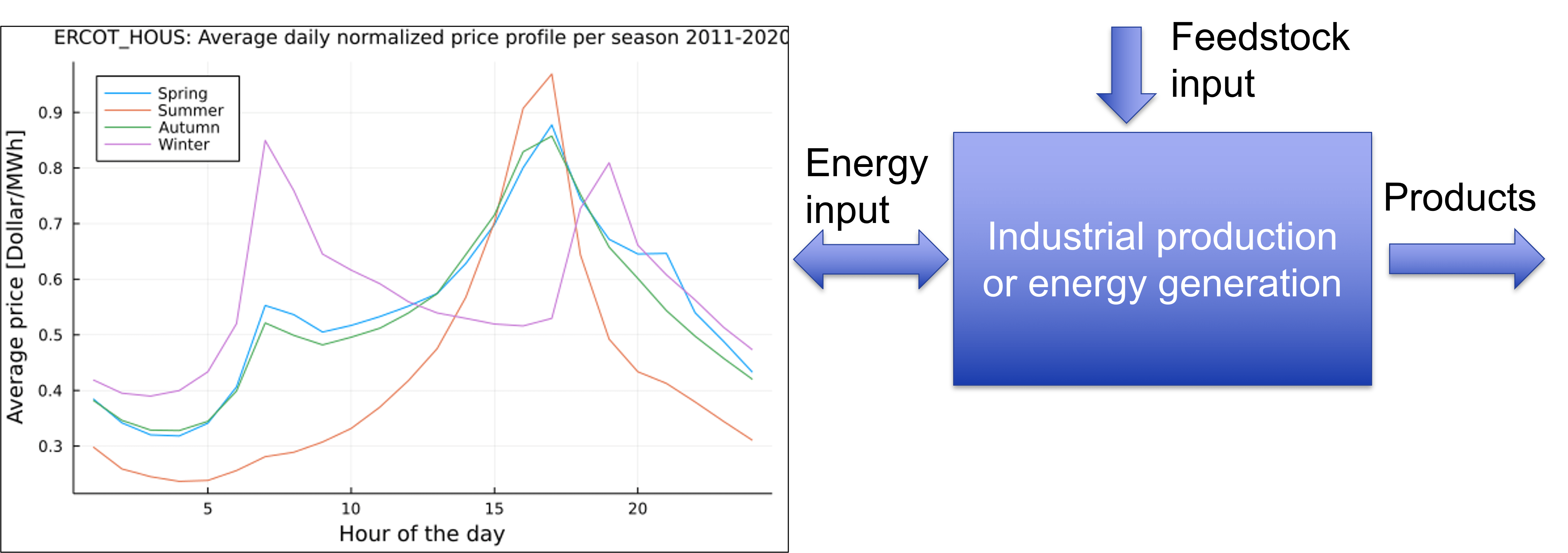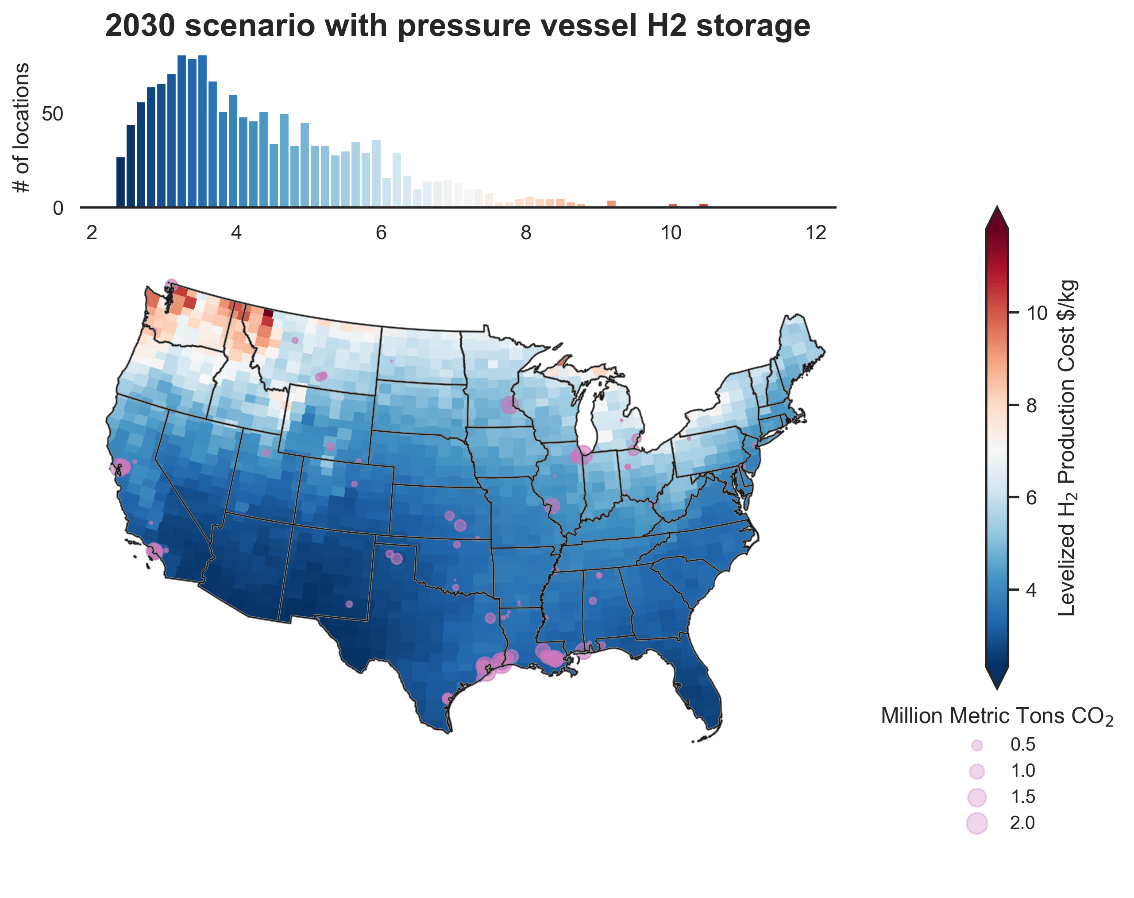Modeled pathways for energy system decarbonization by mid-century indicate an expanded role for electricity in final energy demand compared to today’s levels, coupled with the decarbonization of the electricity supply through increasing generation from variable renewable energy (VRE) sources like wind and solar. Cost-effective integration of VRE generation, however, is contingent on designing power and energy systems to be more flexible in order to handle fluctuations in renewable energy output across multiple timescales. As the below figure shows, wholesale electricity prices can vary substantially over the course of the day and across seasons (see left panel), which incentivizes deployment of operationally flexible demand-side technologies that can adjust their electricity consumption in response to grid conditions and thereby balance temporal variability introduced by wind, solar generation. Examples include electrolyzers for water splitting, heat pumps, electrochemical industrial processes and different forms of distributed energy storage.

In this context, conventional techno-economic (TEA) and life cycle assessment (LCA) methods need to be improved to accurately assess the economic and environmental impact of emerging demand and supply-side technologies in the following ways:
- Accounting for the temporal variability and uncertainty in external drivers (e.g. electricity prices, marginal emissions factors) and its influence on asset operation,
- Considering trade-offs between asset design and operation and their locational value
- Develop robust and practically implementable mechanisms for tracking greenhouse gas impacts associated with electricity-driven processes
Our group is interested in advancing TEA and LCA methods that are cognizant of the spatio-temporal dynamics of energy systems in which new technologies will be deployed.
As an example, recently we have developed mathematical models for integrated design and scheduling optimization of electricity-intensive processes and applied them to study the economics hydrogen production via low temperature electrolyzers powered by co-located VRE sources. The developed framework can be used to map the spatial variation in the economics of renewable-powered hydrogen production, as illustrated in the heat map shown below.

Relevant Past Projects
- Life cycle greenhouse gas impacts of coal and imported gas-based power generation in the Indian context
- Systematic assessment of metrics used for measuring climate impacts of non-CO2 greenhouse gases like CH4
- Impact of model resolution on electricity system planning outcomes
- System value of battery storage in grids with increasing wind and solar penetration
- Energy storage investment and operation in efficient electric power systems (part of MITEI Future of Energy Storage project)
- Representative period selection for energy system planning – use of auto-encoders and estimated outputs
Relevant Ongoing Projects
- Degradation mechanisms and their impact on the cost-effectiveness of low-temperature electrolytic hydrogen production
- Assessment of geological H2 storage in salt caverns for multi-vector, low-carbon energy systems
- System impacts of decarbonization pathways for space heating in cold climates
- Pathways Towards Gigaton Scale Low-Carbon H2 production
Recent Publications
- Zhang, Y., Cheng, V., Mallapragada, D.S., Song, J., and He, G. (2022). A Model-Adaptive clustering-Based Time Aggregation Method for Low-Carbon Energy System Optimization. IEEE Transactions on Sustainable Energy, 1–11. 10.1109/TSTE.2022.3199571. (link)
- Sepulveda, N.A., Jenkins, J.D., Edington, A., Mallapragada, D.S. and Lester, R.K., 2021. The design space for long-duration energy storage in decarbonized power systems. Nature Energy, 6(5), pp.506-516. (link)
- Mallapragada, D.S., Sepulveda, N.A. and Jenkins, J.D., 2020. Long-run system value of battery energy storage in future grids with increasing wind and solar generation. Applied Energy, 275, p.115390. (link)
- Mallapragada, D.S., Gençer, E., Insinger, P., Keith, D.W. and O’Sullivan, F.M., 2020. Can industrial-scale solar hydrogen supplied from commodity technologies be cost competitive by 2030?. Cell Reports Physical Science, 1(9), p.100174.
- Mallapragada, D.S. and Mignone, B.K., 2020. A theoretical basis for the equivalence between physical and economic climate metrics and implications for the choice of Global Warming Potential time horizon. Climatic Change, 158(2), pp.107-124 (link)